#mesta coining
Text

Heavinemestic / Heavinemesta


[ heav(en) + (div)ine + mestic / mesta ~~ heavinemestic / heavinemesta ]
A mestic term to describe a gender hoard that revolves around heavenly and divine themes . Someone who is heavinemestic / heavinemesta has a hoard made up of mostly or all heaven or divine related terms, or their most important identities are heaven or divine related, or where the heaven / divine is just a theme important to their gender hoard .
[ flag ID : a rectangular flag with five vertical stripes , the first , second , fourth and fifth are thinner and have a horizontal stripe that goes on top of them , and the middle stripe is the thickest . the vertical stripes colours from left to right are : light sky blue , blue , ice white , blue , and light sky blue . the horizontal stripe colours is : pastel yellow . in the centre of the flag there's an icon that resemble the heavens , with clouds and a golden gate . end ID ]
Requested by @unknowncollective-world
Coined by the prince 👑

[ PT : Anyone can use the terms that the charming has coined , but ke asks to Please DNI if any of these aply to you: racist, sexist, ageist, antimogai, antiliom, BaB, ableist, transmed, transcum, fujoshi, radfem, terf, proshipper, anti-agere, antifurry, NSFW blogs, (NO)MAP, zoophile, necrophiliac, incestuous or supporter of those who act on these types of paraphilias. end PT ]

#~ requests#~ unknowncollective world#coined by the prince#mestic#mestic coining#mesta#mesta coining#gender hoard#mogai#liom#mogai blog#liom blog#mogai coining#liom coining#mogai community#liom community#flag coining#label coining#mogai label#liom label#mogai safe#liom safe#actually mogai#category ~ gender
28 notes
·
View notes
Text
Transmascmesta + Transvirmesta
[PT: Transmascmesta + Transvirmesta]


[ transmascmesta | transvirmesta ]

Transmascmesta / Transmascmestic: A mesta / mestic [link] term to describe a gender collection that revolves around being transmasculine. One who is transmascmesta has a collection made up of mostly or all transmasc and masculine connected terms, their most important identities are transmasc and masculine connected, or being transmasculine is a important part to their gender collection.
Transvirmesta / Transvirmestic: A mesta / mestic [link] term to describe a gender collection that revolves around being transvir [link]. One who is transvirmesta has a collection made up of mostly or all transvir and manhood connected terms, their most important identities are transvir and manhood connected, or being transvir is a important part to their gender collection.

The transmasc flag that the flag was based on is from here [link], and the tranvir flag is from here [link].
@radiomogai @liom-archive @obscurian
#mogai#liom#mogai coining#liom coining#mesta#mestic#transmasc#transvir#transvirmesta#transmascmesta#our flags#our terms#☎️.txt
21 notes
·
View notes
Text


Endermesta / Endermestic
Endermesta / Endermestic : A mesta / mestic term to describe a gender collection that revolves around endrrmen. One who is endermesta/mestic has a collection made up of mostly or all enderman-connected terms, their most important identities are enderman connected, or endermen are a theme important to their gender collection.
[pt: endermesta / endermestic]
#endermesta#endermestic#mesta#mestic#liom#liom pride#mogai#liom coining#mogai coining#actually liom#liom community#enders terms
7 notes
·
View notes
Text

[/ID: a flag of unique design, with a heart shape of two shades of red in the center. The lighter shade acts as a highlight for the heart, drawn where light would reflect off of it. It is otherwise simplistic, with a heart cutout in the center of it. The square behind the heart is bubblegum pink, with two thick, vertical, pastel pink lines bracketing it on either side. A second set of apple red, vertical lines, borders the outer edges of the pastel pink lines. Overlapping the center of both vertical lines on either side is a horizontal, strawberry pink line. All of the lines are the same width, while the strawberry pink line stops short once it reaches the edge of the square. /End ID.]
❣️ Amormesta // Amormestic❣️
(PT: Amormesta // Amormestic)
A mestic term meaning: to have a gender hoard which revolves around the concept of love, romance, dating, crushes, and affection.
Someone using this terms would consider their gender hoard to mostly revolve around love and/or love-adjacent terms, or find love to be an important theme or “vibe” to their gender hoard.
“Amor” from latin amor, meaning “love; affection; romance.”
“Mesta” from swedish mestadels, meaning “mostly.” (via vesicelestial)
The term Mesta was coined by @vesicelestial
(Please ask to be untagged if you wish!)
As always, please tell me if this has be coined previously!
#vilehoard#res coins#mestic#mesta#armormesta#lovemesta#amormestic#lovemestic#crushmesta#crush gender#gender hoard#gender term#mogai#liom#mogai label#liom identity#liom label#lgbtq#mestic identity#mesta label#mesta identity#mestic label#mogai coining#liom coining#liom community#liom flag#mogai blog#mogai identity
27 notes
·
View notes
Photo

[ ⭘ ]
LUXIMESTIC !
╰┈➤ a mestic term for when most or all of one's gender hoard/collection is, or is related to, luxine.
╰┈➤ lux + i + mest + ic
╰┈➤ from 'luxine', and the suffix 'mestic'.
╰┈➤ requested by no one, coined by us.
[ ⭘ ]
#mestic#mesta#gendermestic#gendermesta#⭘ my terms#coining#mogai#mogaireal#mogaisafe#mogai coining#mogai flag#liom#liomreal#liomsafe#liom coining#liom flag
32 notes
·
View notes
Text


✧。:*▹ Fogmesta / Fogmestic
[ PT/ Fogmesta/Fogmestic /PT end ]

✧ Fogmesta / Fogmestic is a term to describe a gender hoard that revolves around fog-related themes. Someone who is fogmestic has a hoard made up of mostly or all fog-related terms, or their most important identities are fog related, or where fog is a theme important to their gender hoard.
✧ Requested by anon

#Fogmesta/Fogmestic#Fogmesta#Fogmestic#fogmesta#fogmestic#mesta#mestic#fog#has pt#has id#lgbtqia+#mogai haven#mogai coining#liom coining#coined by me#new term#new flag#new hoarder term#nox's flags#nox's terms#request#had a lot of fun w this one :)
9 notes
·
View notes
Text
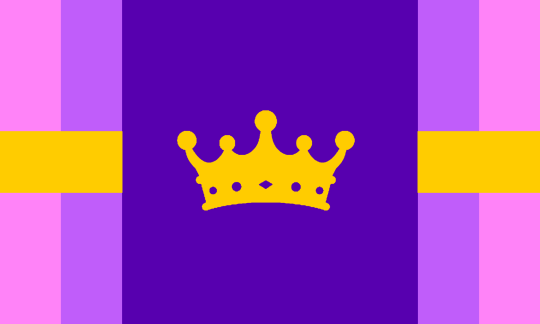
Kingmestic / Kingmesta ; Where one's gender hoard revolves around kings. Someone who is kingmestic/mesta has a hoard made up of mostly or all king related terms, or their most important identities are king related, or where king is just a theme important to their gender hoard.
-
Color Meanings
Colors I associate with kingliness
Etymology
King + -mestic
King + -mesta
-
Based on @the-coiner-prince ' s princemestic/mesta, -mestic / -mesta by @vesicelestial
#𝄡 — coining#mogai friendly#mogai coining#mogai flag#liom coining#liom#mogai#my terms#my flags#mestic#mesta#kingmestic#kingmesta
12 notes
·
View notes
Text
Goremesta / Goremestic


[ID: 2 rectangular flags with 4 equally-sized vertical lines and a very thick one in the middle. over the 4 vertical lines but under the very thick line is a bright red horizontal line. vertical line colors in this order from left to right: black-red, red-pink, dullish red, red-pink, black-red. in the center of the first flag is a red symbol, the symbol is a blood drop. End ID]
Goremesta / Goremestic: a mesta / mestic term to describe a gender hoard that revolves around the word / concept of gore. One who is goremesta has a hoard made up of mostly or all gore-connected terms, their most important identities are gore-connected, or gore is a theme important to their gender hoard.
Etymology: gore, mesta / mestic
Pronounced: gore mes-ta / mes-tick (gore mesta / mestic)
for day 7 of my coining event; for the prompt: horror / gore
@radiomogai , @oneofmanyarchives

[ID: a divider of a line of waves with a light blue to darker blue gradient. End ID]
#Goremesta#Goremestic#mesta#mestic#gender#neogender#xenogender#liom#mogai#blood tw#emoji tw#gore mention#rev500event#eyestrain#🪼 creations#category: collector terms#event creations
42 notes
·
View notes
Text
Contramestic - Coining Post
[PT: Contramestic - Coining Post]
Contramestic is a mestic term used to describe a gender hoard that revolves around contradiction and being contradictory.
Examples of contramestic hoards:
Most or all terms contradict with at least one other term in the hoard
Most important, influential, or primary identities are contradictory
Contradiction and contradictory identities are an important/central theme.
The noun version of contramestic is contramesta
Mestic coining post - https://www.tumblr.com/vesicelestial/669247859112214528/suffix-coining-mesta-mestic?source=share
#coining post#queer term#queer coining#liom coining#mogai coining#liom term#mogai term#catastrophe coins#catastrophe coins (queer edition)
9 notes
·
View notes
Text
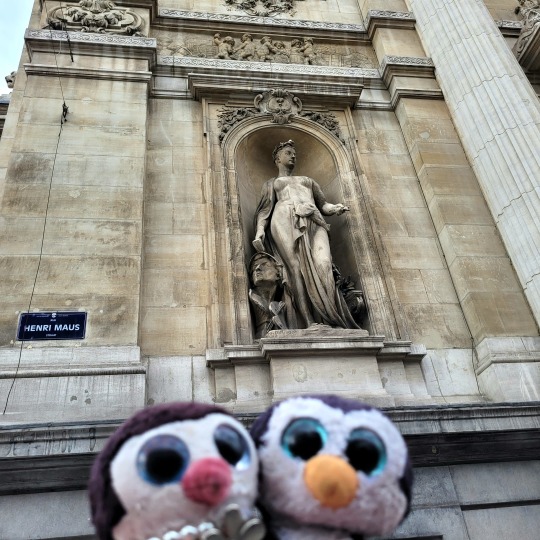
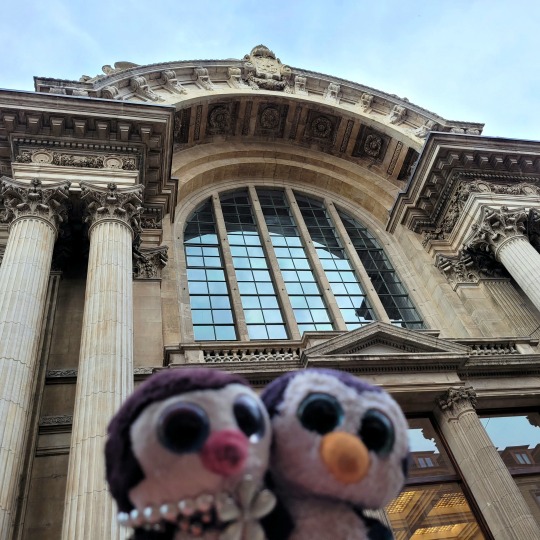

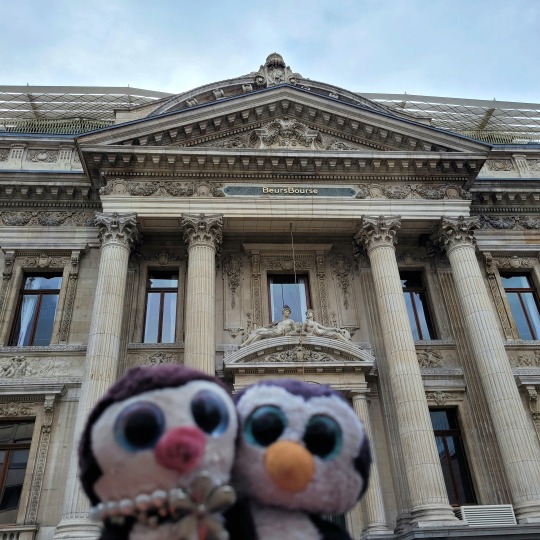

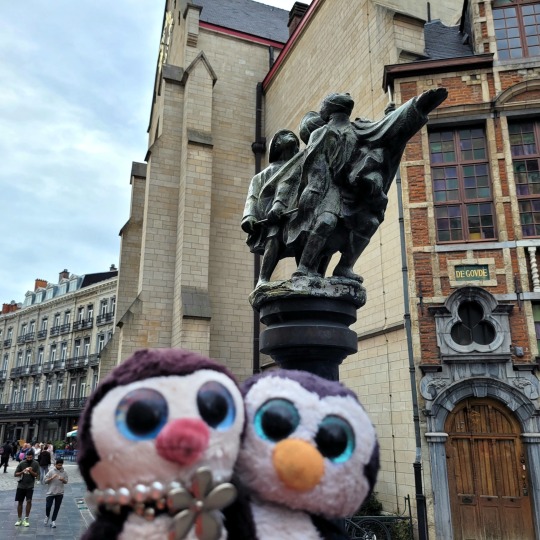
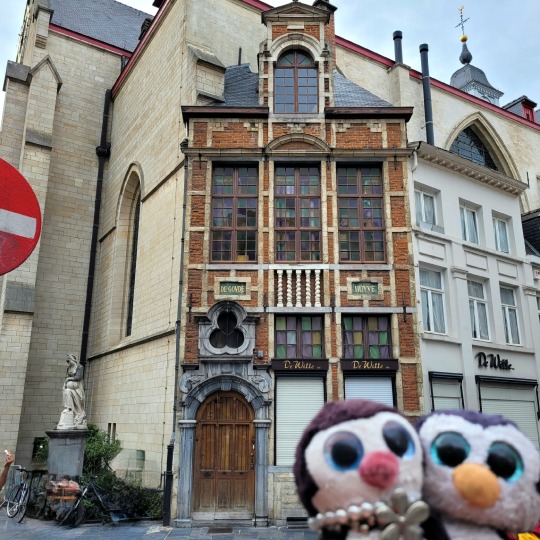
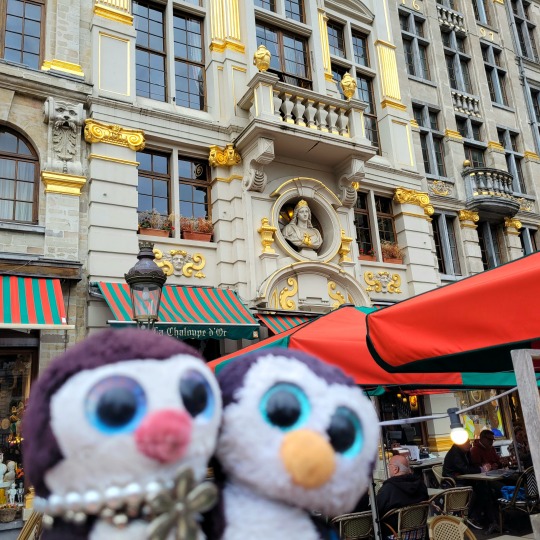

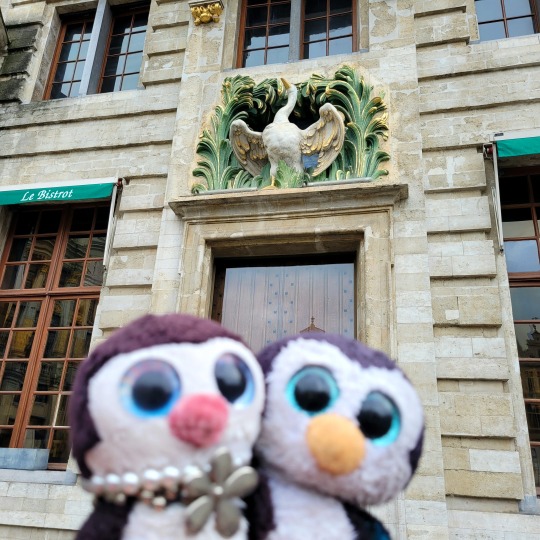
2023/08/03
Volvimos al centro de la ciudad para admirar los bonitos edificios y esculturas que alberga y descubrir rincones con mucha historia. Fuimos a saludar a un primo que es el guarda de una puerta.
We returned to the city center to admire the beautiful buildings and sculptures it houses and discover corners with a lot of history. We went to greet a cousin who is a gate guard.
Google Translation into French:
Nous sommes retournés au centre-ville pour admirer les beaux bâtiments et sculptures qu'il abrite et découvrir des coins chargés d'histoire. Nous sommes allés saluer un cousin qui est gardien de portail.
Google translation into Italian:
Siamo tornati nel centro della città per ammirare gli splendidi edifici e le sculture che ospita e scoprire angoli ricchi di storia. Siamo andati a salutare un cugino che fa il portinaio.
Google Translation into Portuguese:
Regressámos ao centro da cidade para admirar os belos edifícios e esculturas que alberga e descobrir recantos carregados de história. Fomos cumprimentar um primo que é porteiro.
Google Translation into German:
Wir kehrten in die Innenstadt zurück, um die wunderschönen Gebäude und Skulpturen zu bewundern und geschichtsträchtige Ecken zu entdecken. Wir gingen, um einen Cousin zu begrüßen, der Pförtner ist.
Google Translation into Albanisch:
Ne u kthyem në qendër të qytetit për të admiruar ndërtesat dhe skulpturat e bukura që strehon dhe për të zbuluar qoshe me shumë histori. Shkuam të përshëndesnim një kushëri që është roje porte.
Google Translation into Armenian:
Մենք վերադարձանք քաղաքի կենտրոն՝ հիանալու գեղեցիկ շինություններով ու քանդակներով, որտեղ գտնվում են այնտեղ և բացահայտելու բազմաթիվ պատմություն ունեցող անկյուններ: Գնացինք ողջունելու զարմիկին, ով դարպասապահ է։
Google Translation into Bulgarian:
Върнахме се в центъра на града, за да се полюбуваме на красивите сгради и скулптури в него и да открием кътчета с много история. Отидохме да поздравим един братовчед, който е пазач на портата.
Google Translation into Czech:
Vrátili jsme se do centra města, abychom obdivovali krásné budovy a sochy, které se v něm nacházejí, a objevili zákoutí se spoustou historie. Šli jsme pozdravit bratrance, který je strážcem brány.
Google Translation into Croatian:
Vratili smo se u središte grada kako bismo se divili prekrasnim zgradama i skulpturama u kojima se nalaze i otkrili kutke s puno povijesti. Išli smo pozdraviti rođaka koji je čuvar na kapiji.
Google Translation into Danish
Vi vendte tilbage til byens centrum for at beundre de smukke bygninger og skulpturer, den huser, og opdage hjørner med en masse historie. Vi gik for at hilse på en fætter, som er portvagt.
Google Translation into Slovak:
Vrátili sme sa do centra mesta obdivovať nádherné budovy a sochy, ktoré sa v ňom nachádzajú, a objavovať zákutia s množstvom histórie. Išli sme pozdraviť bratranca, ktorý je strážcom brány.
Google Translation into Slovenian:
Vrnili smo se v središče mesta, da bi občudovali čudovite zgradbe in skulpture, ki jih hrani, ter odkrivali kotičke z veliko zgodovine. Šli smo pozdravit bratranca, ki je vratar.
Google Translation into Estonian:
Jõudsime tagasi kesklinna, et imetleda seal asuvaid kauneid hooneid ja skulptuure ning avastada ajaloorikkaid nurki. Läksime tervitama tädipoega, kes on väravavaht.
Google Translation into Suomi:
Palasimme kaupungin keskustaan ihailemaan sen kauniita rakennuksia ja veistoksia sekä tutustumaan kulmiin, joilla on paljon historiaa. Menimme tervehtimään serkkua, joka on portin vartija.
Google Translation into Georgian:
ჩვენ დავბრუნდით ქალაქის ცენტრში, რათა აღფრთოვანებულიყავით მასში განთავსებული ულამაზესი შენობებითა და ქანდაკებებით და აღმოვაჩინეთ კუთხეები, რომლებსაც ბევრი ისტორია აქვს. წავედით ბიძაშვილთან, რომელიც კარის მცველია.
Google Translation into Greek:
Επιστρέψαμε στο κέντρο της πόλης για να θαυμάσουμε τα όμορφα κτίρια και τα γλυπτά που φιλοξενεί και να ανακαλύψουμε γωνιές με πολλή ιστορία. Πήγαμε να χαιρετήσουμε έναν ξάδερφο που είναι φύλακας της πύλης.
Google Translation into Hungarian:
Visszatértünk a városközpontba, hogy megcsodáljuk a gyönyörű épületeket és szobrokat, amelyeknek otthont ad, és felfedezzük a sok történelemmel rendelkező zugokat. Elmentünk köszönteni egy unokatestvért, aki kapuőr.
Google Translation into Latvian:
Mēs atgriezāmies pilsētas centrā, lai apbrīnotu tajā esošās skaistās ēkas un skulptūras un atklātu nostūrus ar lielu vēsturi. Mēs devāmies sveikt brālēnu, kurš ir vārtu sargs.
Google Translation into Dutch:
We keerden terug naar het stadscentrum om de prachtige gebouwen en sculpturen die het herbergt te bewonderen en hoekjes met veel geschiedenis te ontdekken. We gingen een neef begroeten die poortwachter is.
Google Translation into Norwegian:
Vi returnerte til sentrum for å beundre de vakre bygningene og skulpturene den huser og oppdage hjørner med mye historie. Vi gikk for å hilse på en fetter som er portvakt.
Google Translation into Polish:
Wróciliśmy do centrum miasta, aby podziwiać piękne budynki i rzeźby, w których się znajduje oraz odkrywać zakątki z bogatą historią. Poszliśmy przywitać się z kuzynem, który jest strażnikiem bramy.
Google Translation into Romanian:
Ne-am întors în centrul orașului pentru a admira frumoasele clădiri și sculpturi pe care le găzduiește și pentru a descoperi colțuri cu multă istorie. Ne-am dus să salutăm un văr care este paznic la poartă.
Google Translation into Russian:
Мы вернулись в центр города, чтобы полюбоваться красивыми зданиями и скульптурами, а также открыть для себя уголки с богатой историей. Мы пошли поприветствовать двоюродного брата, который работает охранником у ворот.
Google Translation into Serbian:
Вратили смо се у центар града да се дивимо прелепим зградама и скулптурама у којима се налази и откријемо углове са пуно историје. Отишли смо да поздравимо рођака који је чувар капије.
Google Translation into Swedish:
Vi återvände till stadens centrum för att beundra de vackra byggnaderna och skulpturerna den rymmer och upptäcka hörn med mycket historia. Vi gick för att hälsa på en kusin som är grindvakt.
Google Translation into Turkish:
Barındırdığı güzel binalara ve heykellere hayranlıkla bakmak ve tarihin zengin köşelerini keşfetmek için şehir merkezine döndük. Kapı bekçisi olan kuzenimizi karşılamaya gittik.
Google Translation into Ukrainian:
Ми повернулися до центру міста, щоб помилуватися красивими будівлями та скульптурами, які в ньому розміщені, та відкрити куточки з багатою історією. Ми пішли привітати двоюрідного брата, який є сторожем воріт.
Google Translation into Arabic:
عدنا إلى وسط المدينة للاستمتاع بالمباني والمنحوتات الجميلة التي تضمها واكتشاف الزوايا التي لها الكثير من التاريخ. ذهبنا لاستقبال ابن عمه الذي يعمل حارس البوابة.
Google Translation into Bengali:
আমরা শহরের কেন্দ্রে ফিরে আসি সুন্দর ভবন এবং ভাস্কর্যগুলির প্রশংসা করতে এবং অনেক ইতিহাস সহ কোণগুলি আবিষ্কার করি৷ আমরা গেট গার্ড একজন চাচাতো ভাইকে অভ্যর্থনা জানাতে গিয়েছিলাম।
Google Translation into Simplified Chinese:
我们回到市中心,欣赏美丽的建筑和雕塑,并探索历史悠久的角落。 我们去迎接一位当门卫的表弟。
Google Translation into Korean:
우리는 아름다운 건물과 조각품을 감상하고 많은 역사가 있는 구석구석을 발견하기 위해 시내 중심가로 돌아왔습니다. 우리는 문지기인 사촌을 맞이하러 갔다.
Google Translation into Guarani:
Rojevy táva mbytépe romomba'eguasu haguã umi edificio ha escultura iporãva ipype ha rodescubri esquina orekóva heta tembiasa. Roho romomaitei peteĩ primo-pe ha’éva guardia de puerta.
Google Translation into Hawaiian:
Ua hoʻi mākou i ke kikowaena o ke kūlanakauhale e mahalo i nā hale nani a me nā kiʻi kiʻi i hale a ʻike i nā kihi me ka nui o ka mōʻaukala. Hele mākou e aloha i kekahi hoahānau he kiaʻi puka.
Google Translation into Hebrew:
חזרנו למרכז העיר להתפעל מהבניינים והפסלים היפים שבהם ולגלות פינות עם הרבה היסטוריה. הלכנו לברך בן דוד שהוא שומר שער.
Google Translation into Hindi:
हम सुंदर इमारतों और मूर्तियों की प्रशंसा करने और ढेर सारे इतिहास वाले कोनों की खोज करने के लिए शहर के केंद्र में लौट आए। हम एक चचेरे भाई का स्वागत करने गए जो गेट गार्ड है।
Google Translation into Indonesian:
Kami kembali ke pusat kota untuk mengagumi bangunan-bangunan indah dan patung-patung yang ada di dalamnya serta menemukan sudut-sudut dengan banyak sejarah. Kami pergi untuk menyambut sepupu yang merupakan penjaga gerbang.
Google Translation into Japanese:
私たちは市内中心部に戻り、そこにある美しい建物や彫刻を鑑賞し、多くの歴史のある街角を発見しました。 私たちは門番をしているいとこに挨拶に行きました。
Google Translation into Kyrgyz:
Биз шаардын борборуна кайттык, анда жайгашкан кооз имараттарды жана скульптураларды суктандырып, көптөгөн тарыхы бар бурчтарды ачтык. Биз дарбаза күзөтчүсү болгон жеңе менен учурашууга бардык.
Google Translation into Malayalam:
അതിമനോഹരമായ കെട്ടിടങ്ങളെയും ശിൽപങ്ങളെയും അഭിനന്ദിക്കാനും ഒരുപാട് ചരിത്രമുള്ള കോണുകൾ കണ്ടെത്താനും ഞങ്ങൾ സിറ്റി സെന്ററിലേക്ക് മടങ്ങി. ഞങ്ങൾ ഗേറ്റ് കാവൽക്കാരനായ ഒരു ബന്ധുവിനെ അഭിവാദ്യം ചെയ്യാൻ പോയി.
Google Translation into Malay:
Kami kembali ke pusat bandar untuk mengagumi bangunan dan arca yang indah yang menempatkannya dan menemui sudut yang mempunyai banyak sejarah. Kami pergi menyapa seorang sepupu yang merupakan pengawal pintu.
Google Translation into Malagasy:
Niverina tany afovoan-tanàna izahay mba hankafy ireo trano tsara tarehy sy sary sokitra misy azy ary hahita zorony misy tantara be dia be. Nandeha niarahaba ny zanak'olo-mpiray tam-po izahay izay mpiandry vavahady.
Google Translation into Mongolian:
Бид хотын төвд эргэн ирж, тэнд байрладаг үзэсгэлэнт барилга байгууламж, барималуудыг биширч, маш их түүхтэй булангуудыг олж мэдэв. Бид хаалганы манаач үеэл ахтай мэндлэхээр явлаа.
Google Translation into Nepali:
हामी शहरको केन्द्रमा फर्कियौं सुन्दर भवनहरू र मूर्तिकलाहरूको प्रशंसा गर्न र धेरै इतिहासको साथ कुनाहरू पत्ता लगाउन। हामी गेट गार्ड भएका चचेरे भाईलाई अभिवादन गर्न गयौं।
Google Translation into Panjabi:
ਅਸੀਂ ਸੁੰਦਰ ਇਮਾਰਤਾਂ ਅਤੇ ਮੂਰਤੀਆਂ ਦੀ ਪ੍ਰਸ਼ੰਸਾ ਕਰਨ ਲਈ ਸ਼ਹਿਰ ਦੇ ਕੇਂਦਰ ਵਿੱਚ ਵਾਪਸ ਆ ਗਏ ਅਤੇ ਬਹੁਤ ਸਾਰੇ ਇਤਿਹਾਸ ਵਾਲੇ ਕੋਨਿਆਂ ਦੀ ਖੋਜ ਕੀਤੀ। ਅਸੀਂ ਇੱਕ ਚਚੇਰੇ ਭਰਾ ਨੂੰ ਨਮਸਕਾਰ ਕਰਨ ਗਏ ਜੋ ਗੇਟ ਗਾਰਡ ਹੈ।
Google Translation into Pashtun:
موږ د ښار مرکز ته راستون شو ترڅو د ښکلي ودانیو ستاینه وکړو او د هغې کورونه مجسم کړو او د ډیری تاریخ سره کونجونه کشف کړو. موږ د تره زوی ته چې د دروازې ساتونکی دی ښه راغلاست ووایو.
Google Translation into Persian:
ما به مرکز شهر بازگشتیم تا ساختمانها و مجسمههای زیبایی را که در آن نگهداری میشود تحسین کنیم و گوشههایی با تاریخ فراوان را کشف کنیم. به استقبال پسر عمویی رفتیم که پاسدار دروازه است.
Google Translation into Sundanese:
Urang balik ka puseur dayeuh pikeun admire wangunan geulis tur patung eta imah jeung manggihan sudut kalawan loba sajarah. Urang indit ka salam misan nu penjaga gerbang.
Google Translation into Tagalog:
Bumalik kami sa sentro ng lungsod upang humanga sa mga magagandang gusali at eskultura na kinatitirikan nito at tumuklas ng mga sulok na may maraming kasaysayan. Pumunta kami para batiin ang isang pinsan na guard ng gate.
Google Translation into Thai:
เรากลับไปที่ใจกลางเมืองเพื่อชื่นชมอาคารและประติมากรรมที่สวยงามและค้นพบมุมต่างๆ ที่มีประวัติศาสตร์มากมาย เราไปทักทายลูกพี่ลูกน้องที่เป็นยามเฝ้าประตู
Google Translation into Telugu:
అందమైన భవనాలు మరియు శిల్పాలను ఆరాధించడానికి మరియు చాలా చరిత్ర కలిగిన మూలలను కనుగొనడానికి మేము సిటీ సెంటర్కి తిరిగి వచ్చాము. గేటు కాపలాగా ఉన్న బంధువును పలకరించడానికి వెళ్ళాము.
Google Translation into Urdu:
ہم خوبصورت عمارتوں اور مجسموں کی تعریف کرنے کے لئے شہر کے مرکز میں واپس آئے اور بہت ساری تاریخ کے ساتھ کونوں کو دریافت کیا۔ ہم ایک کزن کو سلام کرنے گئے جو گیٹ گارڈ ہے۔
Google Translation into Uzbek:
Biz shahar markaziga qaytib keldik, u joylashgan go'zal binolar va haykallarga qoyil qoldik va juda ko'p tarixga ega burchaklarni kashf qildik. Darvoza qorovuli bo‘lgan amakivachcha bilan salomlashgani bordik.
Google Translation into Vietnamese:
Chúng tôi quay trở lại trung tâm thành phố để chiêm ngưỡng những tòa nhà và tác phẩm điêu khắc tuyệt đẹp nơi đây cũng như khám phá những góc có nhiều lịch sử. Chúng tôi đến chào một người anh họ làm gác cổng.
#Bruselas#Bruxelles#Brussels#Belgica#Belgium#Architecture#Sculpture#Art#Streeet#Deco#Cousin#Swan#Gate#Guardian#PolloNegroSkyWalker#TravelBlogger#Wanderlust#CoupleGoals#GoodVibes#Plushies#instaGood#Maharashtra#ペンギン
7 notes
·
View notes
Text

Boymestic / Boymesta
[ PT: boymestic / boymesta. end PT ]
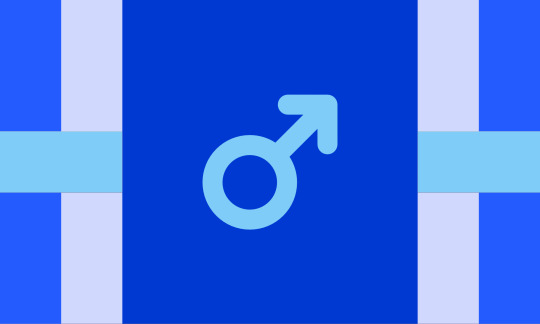
[ boy + mestic ~~ boymestic ]
[ boy + mesta ~~ boymesta ]
A mestic term to describe a gender hoard that revolves around the boy word / concept. Someone who is boymestic / boymesta has a hoard made up of mostly or all boy related terms, or their most important identities are boy related / boyish, or where boyhood is just a theme important to their gender hoard.
[ flag ID : a rectangular flag with five vertical stripes, the first, second, fourth and fifth are thinner and have a horizontal stripe that goes on top of them, and the middle stripe is the thickest. the vertical stripes colours from left to right are: bright blue, ice white, dark blue, ice blue, bright blue. the horizontal stripe colours is: light cyan. in the center of the flag there's a light cyan male/mars icon/symbol. end ID ]
Coined by the prince 👑

#mestic#mestic coining#mesta coining#mesta#mestic gender#mesta gender#coined by the prince#mogai#liom#mogai blog#liom blog#mogai coining#liom coining#mogai community#liom community#flag coining#term coining#gender hoard#gender hoarder#gendercollector#mogai label#liom label#boymestic#boymesta#mestaboy#category ~ gender hoarding
36 notes
·
View notes
Text
Transfemesta + Transeramesta
[PT: Transfemesta + Transeramesta]


[ transfemesta | transeramesta ]

Transfemesta / Transfemestic: A mesta / mestic [link] term to describe a gender collection that revolves around being transfeminine. One who is transfemesta has a collection made up of mostly or all transfem and feminine connected terms, their most important identities are transfem and feminine connected, or being transfeminine is a important part to their gender collection.
Transeramesta / Transeramestic: A mesta / mestic [link] term to describe a gender collection that revolves around being transera [link]. One who is transeramesta has a collection made up of mostly or all transera and womanhood connected terms, their most important identities are transera and womanhood connected, or being transera is a important part to their gender collection.

The transfem flag that the flag was based on is from here [link], and the transera flag is from here [link]. They'll be other trans[x]mesta terms coming out soon!
@radiomogai @obscurian @liom-archive
#mogai#liom#mogai coining#liom coining#mesta#mestic#transfem#transera#transfemesta#transeramesta#our flags#our terms#☎️.txt
13 notes
·
View notes
Text


Shapeshiftermesta / Shapeshiftermestic
Shapeshiftermesta / Shapeshiftermestic : A mesta / mestic term to describe a gender collection that revolves around shapeshifters. One who is shapeshiftermesta has a collection made up of mostly or all shapeshifter-connected terms, their most important identities are shapeshifter connected, or being a shapeshifter/shapeshifters is a theme important to their gender collection.
[pt: shapeshiftermesta / shapeshiftermestic]
#shapeshiftermesta#shapeshiftermestic#mesta#mestic#liom#liom pride#mogai#liom coining#mogai coining#actually liom#liom community#enders terms
8 notes
·
View notes
Photo

The state of the Odrysae
About the beginning of the 5th century, there was a great union of the tribes inhabiting the basin of the River Maritsa, which laid the foundations of the state of the Odrysae, the first great state of non- Greek origin in Europe. Not only the Macedonians and other neighbouring tribes and peoples, but Athens and Sparta as well, the two strongest Greek states, had to bear its political and military importance in mind. Finally, at the beginning of the 3rd century, the Thracians had the misfortune to clash on their own land with the Celts, who passed through the peninsula, part of them settling in Thrace, and ruling certain Thracian tribes for about 60 years.
It was in these complicated external conditions that the Thracian tribes had to develop, particularly in the second half of the first mil- lenium B. C. up to the advent of the Romans. The rate of development of the productive forces among them was different, depending on the varying effect of external factors of a political and economic nature and on the effect of the geographical milieu. Those of the tribes which came into close contact with the Greek colonists developed their economy more rapidly; others, mainly in the mountainous regions and the northern parts of the peninsula, lagged behind in many respects. The Odrysae achieved the highest degree of development of productive forces. Inhabiting the fertile valley of the Hebrus, they had free outlets to the western Black Sea colonies, while the southern rivers of the peninsula, particularly the Hebrus, linked them with the Greek colonies on the Aegean coast tours bulgaria.
The first Greek colonies along the Thracian coast were only founded at the end of the 7th century B. C. At that time the Greek slaveowning city-states were undergoing profound economic and political changes, accompanied by acute social struggles. Owing to this, a considerable number of citizens of the individual polises were forced to leave their native cities for ever, and to seek land on which they could settle in distant countries.
Greek colonization
The Thracian coasts became one of the objectives of Greek colonization. A number of colonies sprang up along the Aegean coast, among which Amphipolis on the River Strouma, Abdera near the mouth of the Mesta, and Maronia, east of present-day Portolagos, were of particular importance. On the northern shores of the Sea of Marmora the most important colony was Perinth (today Eregli), on the European coast of the Bosphorus Byzantium was founded, and further north on the west coast of the Black Sea came Apollonia (Sozopol), Anchialo (Pomorie), Mesambria (Nessebur), Odessos (Varna), Dionysopolis (Balchik), CalJatis (Mangalia), Tomi (Constantsa), and Istria south of the mouth of the Danube. Greek colonization of the Black Sea west coast came to an end in general lines about the end of the 6th century, but it went on along the Aegean forreveral decades (Amphipoliswas founded in 474 B. C.).
The Ionian Greeks of Asia Minor and the islands were those mainly engaged in colonizing. Certain of the colonies were founded by Athens (Amphipolis); of the Dorian cities Megara was more active, settlers from which city founded Perinth, and on the Black Sea coast Byzantium, Mesambria and Ca 11 at is.
The Greek colonies were at first agricultural settlement and trade transit centres. However, contact with the Thracian tribes of the coast and the hinterland, who were already at a fairly advanced stage of development with regard to productive forces, gave the newly founded colonies the opportunity of engaging in a brisk trade with the local population. Their economy quickly developed, and they soon turned not only into flourishing centres of trade, but into centres with their own craft production. As early as the 6th century and the beginning of the 5th century B. C. some of them began to mint silver and later bronze coins, which served not only to satisfy their home market, but also the needs of exchange with the population of the Thracian hinterland. Coins of the Greek colonies are found singly or as treasures all over Thrace.
0 notes
Photo
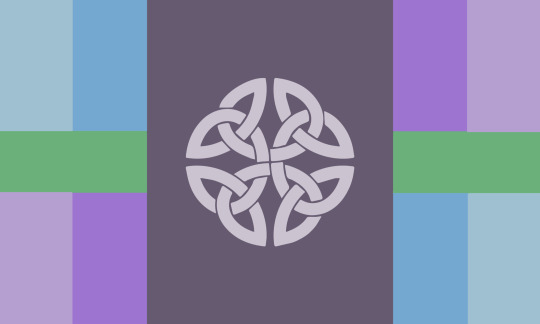
[ ⭘ ]
FAEMESTIC !
╰┈➤ a mestic term for when most or all of one’s gender hoard is related to the fae.
╰┈➤ fae + mes + tic
╰┈➤ from 'fae', and the suffix 'mestic'.
╰┈➤ requested on discord, coined by us.
[ ⭘ ]
#mestic#mesta#gendermestic#gendermesta#⭘ my terms#coining#mogai#mogaireal#mogaisafe#mogai coining#mogai flag#liom#liomreal#liomsafe#liom coining#liom flag
44 notes
·
View notes
Photo

The state of the Odrysae
About the beginning of the 5th century, there was a great union of the tribes inhabiting the basin of the River Maritsa, which laid the foundations of the state of the Odrysae, the first great state of non- Greek origin in Europe. Not only the Macedonians and other neighbouring tribes and peoples, but Athens and Sparta as well, the two strongest Greek states, had to bear its political and military importance in mind. Finally, at the beginning of the 3rd century, the Thracians had the misfortune to clash on their own land with the Celts, who passed through the peninsula, part of them settling in Thrace, and ruling certain Thracian tribes for about 60 years.
It was in these complicated external conditions that the Thracian tribes had to develop, particularly in the second half of the first mil- lenium B. C. up to the advent of the Romans. The rate of development of the productive forces among them was different, depending on the varying effect of external factors of a political and economic nature and on the effect of the geographical milieu. Those of the tribes which came into close contact with the Greek colonists developed their economy more rapidly; others, mainly in the mountainous regions and the northern parts of the peninsula, lagged behind in many respects. The Odrysae achieved the highest degree of development of productive forces. Inhabiting the fertile valley of the Hebrus, they had free outlets to the western Black Sea colonies, while the southern rivers of the peninsula, particularly the Hebrus, linked them with the Greek colonies on the Aegean coast tours bulgaria.
The first Greek colonies along the Thracian coast were only founded at the end of the 7th century B. C. At that time the Greek slaveowning city-states were undergoing profound economic and political changes, accompanied by acute social struggles. Owing to this, a considerable number of citizens of the individual polises were forced to leave their native cities for ever, and to seek land on which they could settle in distant countries.
Greek colonization
The Thracian coasts became one of the objectives of Greek colonization. A number of colonies sprang up along the Aegean coast, among which Amphipolis on the River Strouma, Abdera near the mouth of the Mesta, and Maronia, east of present-day Portolagos, were of particular importance. On the northern shores of the Sea of Marmora the most important colony was Perinth (today Eregli), on the European coast of the Bosphorus Byzantium was founded, and further north on the west coast of the Black Sea came Apollonia (Sozopol), Anchialo (Pomorie), Mesambria (Nessebur), Odessos (Varna), Dionysopolis (Balchik), CalJatis (Mangalia), Tomi (Constantsa), and Istria south of the mouth of the Danube. Greek colonization of the Black Sea west coast came to an end in general lines about the end of the 6th century, but it went on along the Aegean forreveral decades (Amphipoliswas founded in 474 B. C.).
The Ionian Greeks of Asia Minor and the islands were those mainly engaged in colonizing. Certain of the colonies were founded by Athens (Amphipolis); of the Dorian cities Megara was more active, settlers from which city founded Perinth, and on the Black Sea coast Byzantium, Mesambria and Ca 11 at is.
The Greek colonies were at first agricultural settlement and trade transit centres. However, contact with the Thracian tribes of the coast and the hinterland, who were already at a fairly advanced stage of development with regard to productive forces, gave the newly founded colonies the opportunity of engaging in a brisk trade with the local population. Their economy quickly developed, and they soon turned not only into flourishing centres of trade, but into centres with their own craft production. As early as the 6th century and the beginning of the 5th century B. C. some of them began to mint silver and later bronze coins, which served not only to satisfy their home market, but also the needs of exchange with the population of the Thracian hinterland. Coins of the Greek colonies are found singly or as treasures all over Thrace.
0 notes